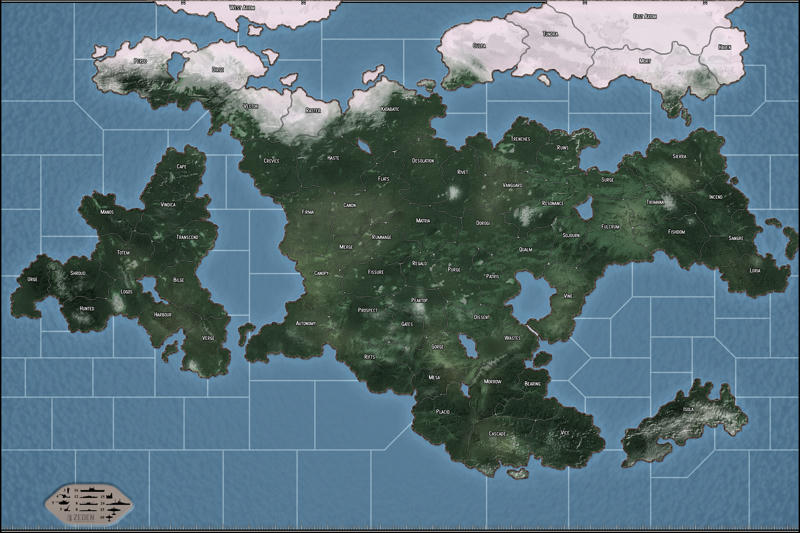Any tips on game/map design? Like things to avoid doing? I might just need to finish up the map and post a photo of it so you experts can actually see it, instead of general assumptions.
The best advice on this will come from the board’s various map-making people, like Imperious Leader. I’ve never made wargaming maps, but here are a few thoughts for whatever they’re worth.
I personally prefer area-movement maps (like in most of the A&A games) over squares and hexes. They look more natural to me and better suited (in my opinion) to games that operate at the global/strategic level. This is due to the fact that, at that level, things like combat and movement and the depiction of the military forces involved occur at a very high level of abstraction – so it doesn’t seem like a good fit to combine this abstraction with the kind of fine-scale movement tracking that hexes offer. Hexes, to me, only work well for large-scale actions when tracking is a central game element, such as in hunt-the-Bismarck type games. On another point, I find it annoying that hexes only allow straight-line movement in six of the eight main compass directions. Hexes are better than squares in that regard (since squares only allow straight-line movement in four directons), but they still don’t permit movement in one of the two diagonal axes.
One idea you might want to consider, on the issue of map zone size adequacy, is to use a split-representation system along the lines of the “task force markers” that were used in the original A&A Pacific game. In such a system, the plastic sculpts corresponding to a particular group of forces are placed off the game map (on a side table) rather than on the map, along with a small numbered identifying marker. A corresponding marker is placed on the map to mark the position of the force group. That way, the map sections only need to be big enough to accommodate these small markers rather than a pile of sculpts, and you only need to move the markers from position to position rather than the sculpts.
As a further refinement, you can even use this system (if you’re so inclined) to introduce partial blinding into the game. This involves keeping your map markers face-down until they make contact with enemy markers (which are also face down). Before the markers make contact (at which point they are both turned face up), each side knows the composition of the enemy’s various forces (seen via the groups of off-the-board sculpts) and the position of the enemy’s various forces (seen via the map markers), but remains unaware of which group of sculpts corresponds to which map marker. This makes possible the element of surprise, which is absent in a conventional A&A game in which you can always see every detail of the enemy’s forces. The old Stratego game works a bit like that, in the sense that you know what pieces the enemy has and you know where on the board the enemy has pieces, but you don’t know the specific unit type of each piece until you make contact with it.








